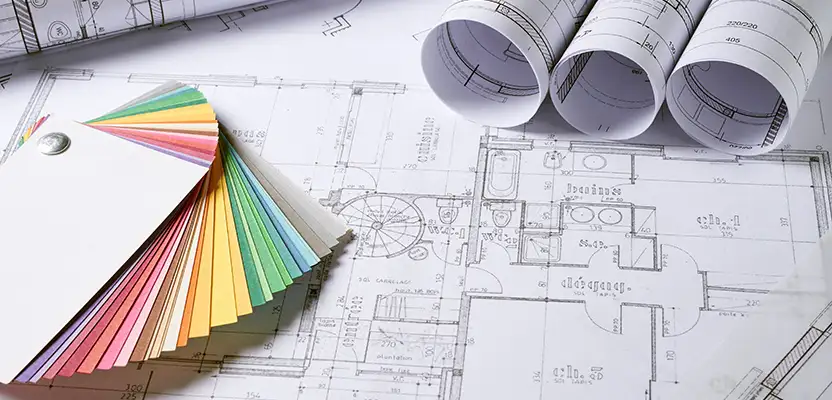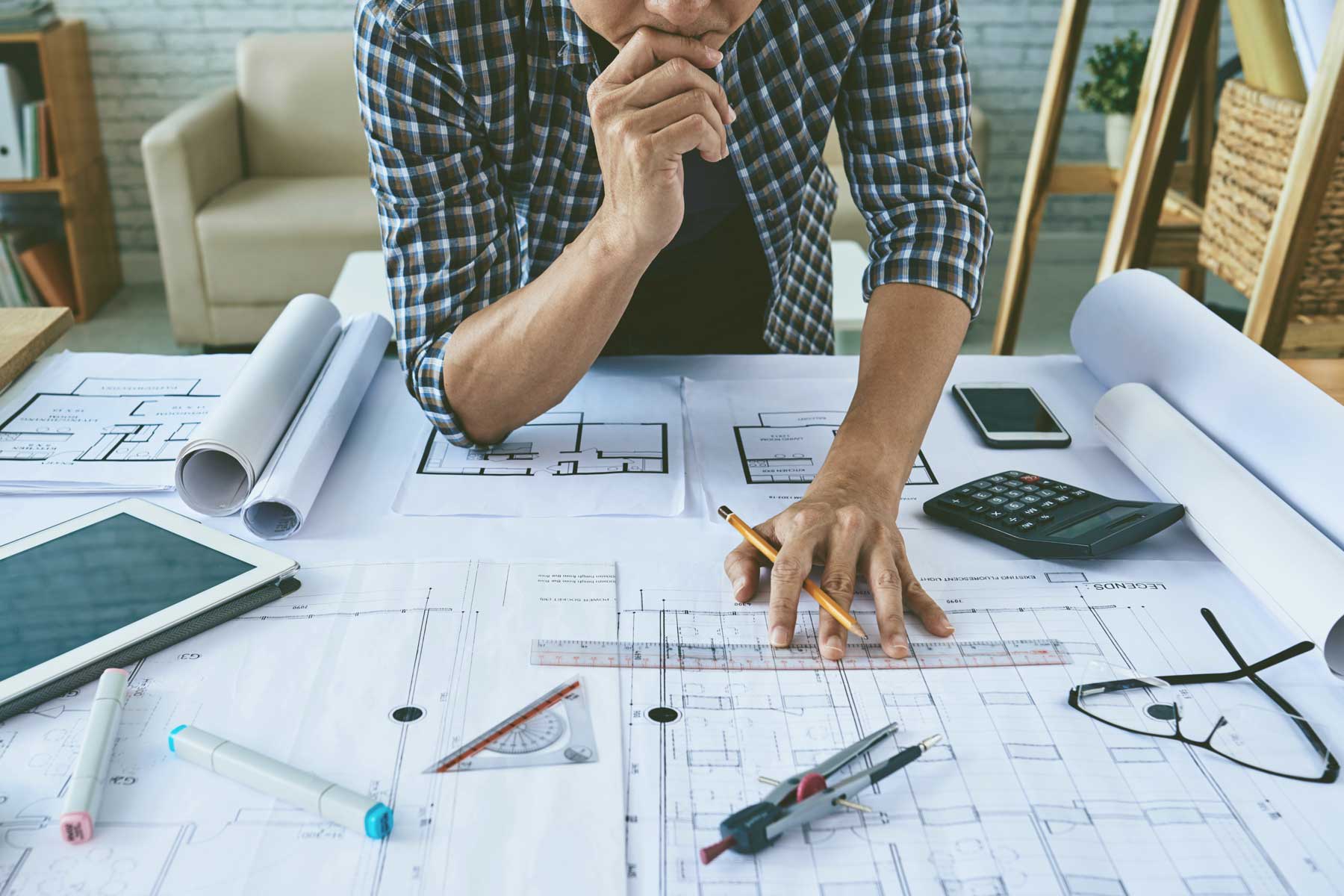Architect Hiring Guide for Property Owners and Developers
Architect Hiring Guide for Property Owners and Developers
Blog Article
Comprehending the Diverse Occupation Paths Available for Aspiring Architect
As a hopeful Architect, you have a globe of career courses waiting for you. Whether you're drawn to typical design or the nuances of lasting layout, there's a niche that lines up with your interests.
Standard Architecture: Designing Frameworks and buildings
Typical style concentrates on developing structures and structures that mix performance with aesthetic allure. Your styles can mirror social heritage, showcasing neighborhood traditions while meeting contemporary needs.
You'll create skills in composing, model-making, and site evaluation, allowing you to envision and communicate your concepts successfully. Engaging with clients, you'll need to comprehend their vision and convert it into possible styles.
Additionally, building codes and sustainability practices are essential in your job, guaranteeing your frameworks are secure and environmentally friendly. As you grow in your career, you'll discover chances in property, business, or perhaps reconstruction projects, each offering unique difficulties. Embracing typical architecture leads the way for a meeting profession that admires the past while shaping the future.
Urban Preparation: Forming Areas and Public Spaces
As a hopeful Architect, you can play a vital duty as a city planner, changing exactly how areas work and connect. By employing neighborhood engagement strategies, you'll assure that homeowners have a voice fit their environment. And also, incorporating sustainable layout principles will certainly assist create spaces that not only meet today's needs yet additionally protect the future.
Duty of Urban Planners
While several might assume of engineers as the sole enthusiasts behind structures, metropolitan organizers play a vital duty in shaping the wider landscape of communities and public spaces. By teaming up with different stakeholders, you'll assist create parks, transportation systems, and domestic locations that promote social communication and availability. Your experience in spatial layout and community dynamics enables you to imagine future growth while maintaining social heritage.
Neighborhood Interaction Strategies
Reliable community involvement approaches are vital for city organizers to guarantee that the voices of citizens are listened to and valued in the preparation procedure. To promote meaningful dialogue, you need to prioritize open forums and workshops where area participants can reveal their concepts and problems. By actively including and listening responses, you'll develop areas that show the neighborhood's needs, eventually leading to even more effective and sustainable city settings.
Lasting Layout Principles
When designing city spaces, integrating sustainable style concepts is important for producing environments that flourish both ecologically and socially. You need to start by concentrating on power efficiency, making use of products that decrease waste and promote recycling. Take into consideration incorporating eco-friendly spaces, like parks and yards, to boost biodiversity and boost air top quality. Advertising walkability and public transport can decrease dependence on vehicles, cultivating a much healthier area.
Creating with water conservation in mind is additionally vital-- consider rainfall gardens and absorptive surfaces to manage stormwater. Entailing neighborhood members during the preparation process warranties that the spaces you create meet their requirements and motivate social interaction. By accepting these concepts, you'll add to dynamic, sustainable metropolitan landscapes that benefit everybody.

Landscape Style: Creating Sustainable Exterior Settings
As you discover landscape architecture, you'll discover important style concepts that develop gorgeous and useful outside areas. Sustainable practices play a vital function in ensuring these environments flourish while minimizing ecological effect. And also, you'll find a range of profession opportunities that enable you to make a real distinction in how individuals interact with nature.
Design Principles in Landscape
Recognizing style concepts in landscape style is necessary for developing lasting outdoor settings that harmonize with nature. You'll need to ponder elements like range, proportion, and equilibrium to guarantee your layouts feel cohesive and inviting. Including indigenous plants not just improves biodiversity yet likewise minimizes water usage, making your landscape durable. Think of the circulation of room and exactly how people communicate with it; paths and seating locations should invite exploration and leisure. Additionally, take note of seasonal modifications, creating with products that complement the environments year-round (Architect). By prioritizing sustainability and aesthetic appeals, you can create outdoor spaces that improve the community and promote well-being. Accepting these concepts will certainly establish a strong structure for your profession in landscape architecture.
Lasting Practices Introduction
Lasting techniques in landscape design not only focus on looks but additionally prioritize eco-friendly health click here and resource preservation. You can design areas that promote dirt wellness, such as using organic products and practicing permaculture concepts. Inevitably, these practices guarantee your designs benefit both people and the setting for years to come.
Career Opportunities Exploration
With a strong structure in sustainable techniques, landscape architecture uses a selection of job courses that allow you to make a purposeful influence on the setting. Urban organizers typically team up with landscape architects to produce eco-friendly rooms in metropolitan setups, boosting city livability. If you're passionate concerning education, think about coming to be a landscape design educator, inspiring future generations.
Lasting Design: Focusing on Eco-Friendly Practices
As you discover your job in architecture, embracing eco-friendly practices can set you apart in a competitive area. Lasting layout concentrates on producing structures that reduce ecological influence while boosting passenger wellness. By incorporating renewable products, energy-efficient systems, and lasting building methods, you'll add to a greener future.
Beginning by gaining expertise of environment-friendly certifications like LEED or BREEAM, which can boost your qualifications. Consider just how natural light, air flow, and thermal efficiency can optimize design. Collaborate with designers and environmental professionals to introduce options that reduce waste and conserve resources.
Do not neglect the importance of community participation-- interesting neighborhood stakeholders can inspire designs that integrate with the environment. As clients progressively prioritize sustainability, your proficiency in environment-friendly practices will certainly not just draw in jobs however likewise satisfy your interest for responsible design. Embrace this critical aspect of the career, and watch your career flourish.
Historic Preservation: Securing and Restoring Social Heritage
While you begin on your architectural trip, think about the necessary function of historic conservation in maintaining our social heritage. This field concentrates on the protection and repair of significant buildings, websites, and structures that tell the stories of our past. By participating in historical preservation, you'll assist secure the building heritage that forms community identification.
As a historical conservation Architect, you'll evaluate historic value and analyze the condition of structures. You'll work carefully with chroniclers and guardians to guarantee authentic repair strategies are used. This occupation path enables you to mix imagination with research, allowing you to create solutions that appreciate original materials and craftsmanship.
Your job not just adds to sustainability by reusing existing structures however additionally cultivates a sense of satisfaction within communities. Embracing this path will aid you become a guardian of history, protecting the tales and aesthetics that enrich our lives.
Interior Design: Enhancing Indoor Spaces
Historical preservation and interior style both share a dedication to improving the built atmosphere, yet they concentrate on different elements. While historic conservation emphasizes preserving a framework's historical and social worth, interior design zeroes in on maximizing indoor areas for performance and here visual appeals.
As an aspiring Architect, you'll locate that indoor style enables you to blend creative thinking with technical abilities. You'll create spaces that not just look excellent yet also advertise convenience and effectiveness. This area includes comprehending how light, shade, and products engage within a space, influencing mood and usability.
You'll work with different jobs, from residential homes to business workplaces, making certain that each setting satisfies the demands of its occupants. By prioritizing user experience, you can change interiors into functional and inspiring rooms, making a substantial effect on exactly how people connect with their surroundings. Embrace the opportunity to enhance indoor atmospheres and shape the way people function and live.
Industrial Layout: Combining Performance With Aesthetics
Industrial style plays an important role in developing items that effortlessly blend aesthetic appeals with capability, making sure that what you make use of day-to-day is not only visually appealing but additionally functional. As an ambitious Architect, you can engage on your own in this area, concentrating on making whatever from furnishings to customer electronic devices. Your job includes comprehending user demands, materials, and producing procedures, permitting you to develop innovative services that boost day-to-day experiences.
In industrial layout, you'll commonly work together with marketers, engineers, and producers, ensuring that your layouts are not just lovely yet additionally possible. You'll learn to balance form and feature, prioritizing usability without giving up design. By refining your abilities in laying out, 3D modeling, and prototyping, you'll be fully equipped to bring your ideas to life. This occupation path offers a vibrant atmosphere where imagination fulfills practicality, making it a satisfying option for architects thinking about shaping the items of tomorrow.
Regularly Asked Inquiries
What Educational Certifications Do I Required to End Up Being an Engineer?
To end up being an engineer, you'll require an expert degree in design, generally a Bachelor's or Master's. In addition, you'll need to complete a teaching fellowship and pass the Architect Registration Exam to exercise legally.
Are There Accreditation Needs for Various Building Career Paths?
Yes, there're qualification requirements for various building paths. Architect. You'll require to pass tests, full teaching fellowships, and occasionally pursue specialized training, relying read more on your picked emphasis, like landscape design, metropolitan layout, or historical conservation
What Software Application Abilities Are Crucial for Engineers Today?

How Can I Gain Practical Experience While Researching Design?
You can get practical experience by interning at architectural firms, taking part in layout competitors, volunteering for area projects, or working together with classmates on real-world assignments. These possibilities boost your abilities and construct useful links in the sector.
What Work Opportunities Exist Outdoors Typical Design Firms?
You can explore numerous task chances outside typical design companies, like urban preparation, interior decoration, landscape design, building monitoring, realty growth, and even functions in sustainability consulting. Each offers distinct obstacles and rewards.
Whether you're drawn to traditional style or the subtleties of lasting style, there's a niche that aligns with your interests.When making urban rooms, integrating sustainable design concepts is important for developing atmospheres that grow both environmentally and socially.As you explore landscape architecture, you'll uncover vital layout concepts that create attractive and functional exterior rooms.Understanding layout principles in landscape style is important for developing sustainable outdoor atmospheres that balance with nature.In commercial design, you'll frequently work together with manufacturers, marketing experts, and designers, making sure that your designs are not just attractive yet also viable.
Report this page